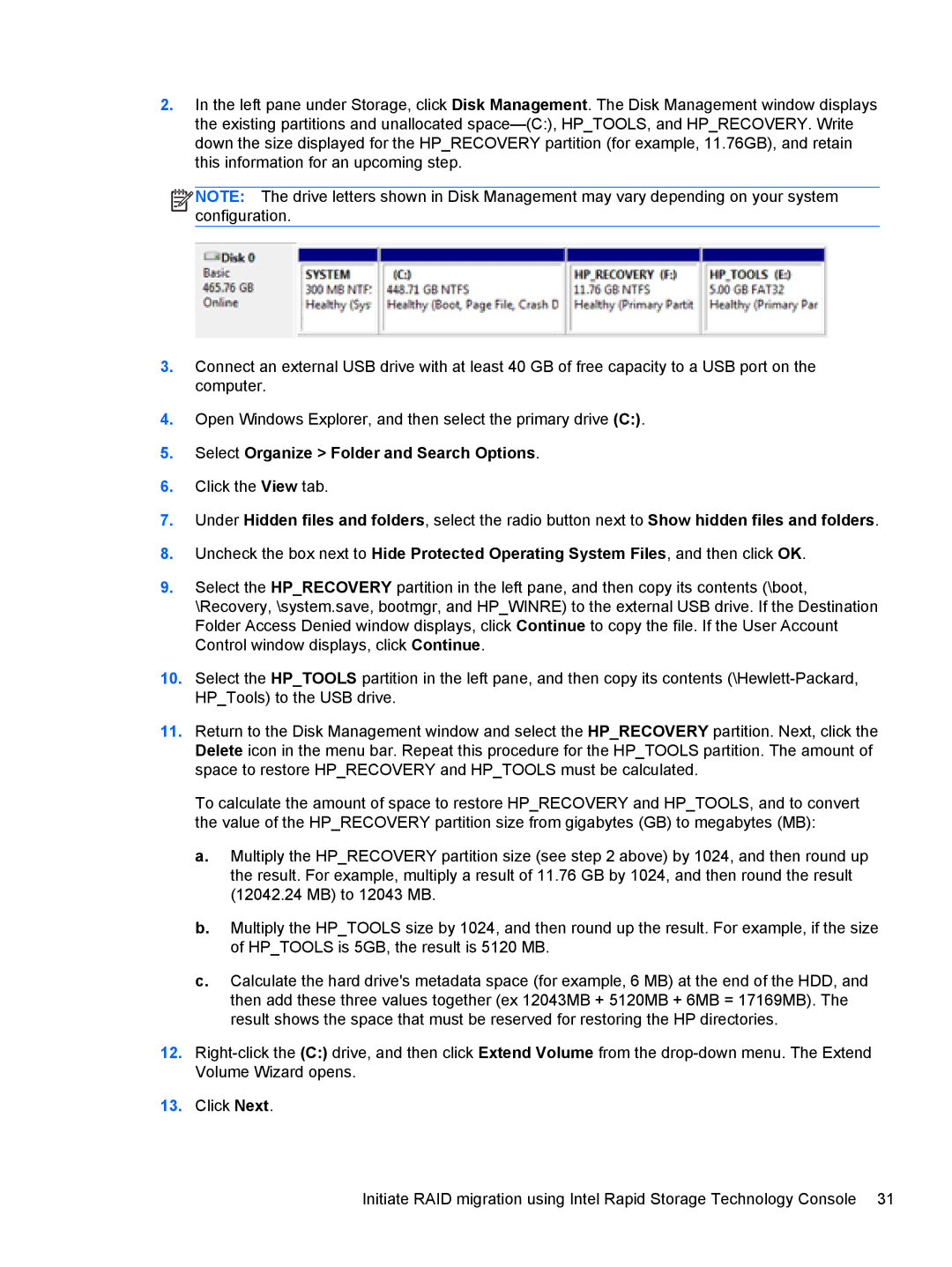
2.In the left pane under Storage, click Disk Management. The Disk Management window displays the existing partitions and unallocated
![]()
![]()
![]()
![]() NOTE: The drive letters shown in Disk Management may vary depending on your system configuration.
NOTE: The drive letters shown in Disk Management may vary depending on your system configuration.
3.Connect an external USB drive with at least 40 GB of free capacity to a USB port on the computer.
4.Open Windows Explorer, and then select the primary drive (C:).
5.Select Organize > Folder and Search Options.
6.Click the View tab.
7.Under Hidden files and folders, select the radio button next to Show hidden files and folders.
8.Uncheck the box next to Hide Protected Operating System Files, and then click OK.
9.Select the HP_RECOVERY partition in the left pane, and then copy its contents (\boot, \Recovery, \system.save, bootmgr, and HP_WINRE) to the external USB drive. If the Destination Folder Access Denied window displays, click Continue to copy the file. If the User Account Control window displays, click Continue.
10.Select the HP_TOOLS partition in the left pane, and then copy its contents
11.Return to the Disk Management window and select the HP_RECOVERY partition. Next, click the Delete icon in the menu bar. Repeat this procedure for the HP_TOOLS partition. The amount of space to restore HP_RECOVERY and HP_TOOLS must be calculated.
To calculate the amount of space to restore HP_RECOVERY and HP_TOOLS, and to convert the value of the HP_RECOVERY partition size from gigabytes (GB) to megabytes (MB):
a.Multiply the HP_RECOVERY partition size (see step 2 above) by 1024, and then round up the result. For example, multiply a result of 11.76 GB by 1024, and then round the result (12042.24 MB) to 12043 MB.
b.Multiply the HP_TOOLS size by 1024, and then round up the result. For example, if the size of HP_TOOLS is 5GB, the result is 5120 MB.
c.Calculate the hard drive's metadata space (for example, 6 MB) at the end of the HDD, and then add these three values together (ex 12043MB + 5120MB + 6MB = 17169MB). The result shows the space that must be reserved for restoring the HP directories.
12.
13.Click Next.
Initiate RAID migration using Intel Rapid Storage Technology Console 31
